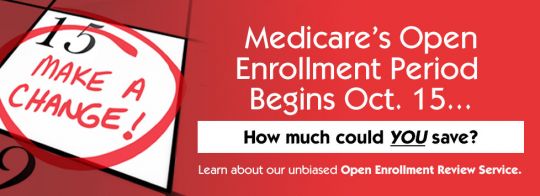The Tier of a Medication Determines Your Cost
Apr 25, 2016
 A drug tier is a way for insurance companies to group and price medications. Every prescription drug plan, including Medicare Part D, uses tiers in its formulary. Whereas most commercial drug insurance plans have two or three tiers, just about all stand-alone Part D drug plans have five tiers.
A drug tier is a way for insurance companies to group and price medications. Every prescription drug plan, including Medicare Part D, uses tiers in its formulary. Whereas most commercial drug insurance plans have two or three tiers, just about all stand-alone Part D drug plans have five tiers.
Here are the five tiers.
- Tier 1, preferred generics: These are commonly prescribed, low-cost medications.
- Tier 2, non-preferred generics: These generic medications will cost more than Tier 1 drugs.
- Tier 3, preferred brands: These are brand-name medications that do not have a generic alternative available.
- Tier 4, non-preferred drugs: These brand-name drugs cost more than those in Tier 3, usually because there is a generic alternative available. Most drug plans use a coinsurance (percentage of the cost) for these drugs.
- Tier 5, specialty drugs: These drugs treat complex conditions, like cancer, diabetes, and multiple sclerosis. These are the most expensive medications in a formulary, and can be either generic or brand name.
- Tier 6, select care drugs: Not every drug plan has this tier, which is limited to select generic medications to treat blood pressure, cholesterol, and diabetes.
There are requirements for tier structure.
- Tier 1 should have the lowest cost sharing and cost will go up with the tier. A quick check of plans in one zip code shows that the member’s cost for Tier 1 drugs can range from zero to $15 and, for Tier 2, from $7 to $47.
- Medicare limits the coinsurance for Tier 5 specialty drugs to 25% for plans that have a standard deductible ($505 in 2023). The coinsurance can be up to 33% for plans that have a deductible of less than $505.
- When a plan changes the tier of a medication during a calendar year, it is considered a formulary change, subject to approval.
Two tips to take home:
- Pay attention to the tiers and the associated charges. The same drug can be a Tier 1 in one plan and Tier 3 in another plan. For instance, a medication to treat Type 2 diabetes can be a Tier 1, 2, 3 or 4 depending on the plan, with out-of-pocket costs ranging from $5 to $115.
- Check changes to your drug plan every October during Open Enrollment. It can save you money. Example: Dave takes a Tier 2 medication that cost $15 this year. He discovers that his plan will change the medication to Tier 3, with a cost of $50. Checking other plans, Dave found this medication as a Tier 1 with no copayment for the mail-order service. That's the plan he will switch to during Open Enrollment.
Tags:

Please add a comment
You must be logged in to leave a reply. Login »